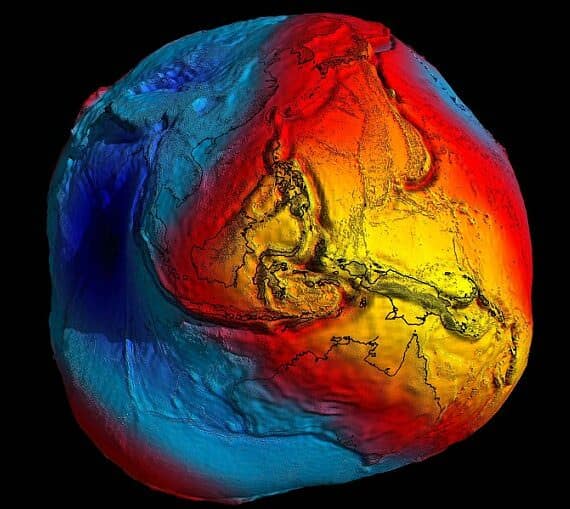The perspectives on the cosmos have influenced humanity for ages. From the time of Ancient Egypt and potentially even earlier societies, researchers have gazed at the heavens, endeavoring to expand their knowledge about the composition of our planet. One of the main areas of interest was naturally the form and dimensions of planet Earth.
Since those times, we have made significant progress. We can now assert a sufficient number of facts with certainty.

One question that has intrigued mankind for centuries is the shape of the Earth. Throughout history, many different ideas have been put forth by scientists from various time periods, including modern times, the Middle Ages, and Antiquity. These scientists faced persecution and even death for their beliefs, but they remained steadfast in their pursuit of the truth.
Nowadays, even a fourth-grade student can confidently state the shape of the Earth.
Let’s take a moment to reflect on the true shape of our home planet.
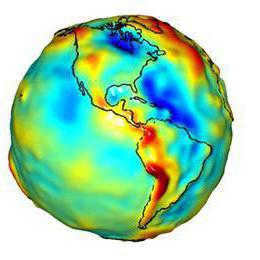
The Earth’s Geoid Shape
In the previous century, humanity achieved a significant advancement: the launch of the first spacecraft into the vast expanses of space. This endeavor provided scientists with a photograph of the planet, revealing a stunning celestial body with minor deviations in its shape.
Based on the latest and most reliable information, we now understand that the Earth is slightly flattened at the poles, giving it an ellipsoid or geoid shape. The distinction between these two terms is primarily relevant in the fields of astrophysics, geodesy, and astronautics. Accurate calculations require precise numerical values for the planet’s parameters, and the Earth’s shape possesses its own unique characteristics.
Numerical representation of the planet’s shape
When it comes to general knowledge about the world around us, the term geoid is commonly used. Interestingly, the word geoid comes from the Greek language and literally means “something resembling the Earth”.
Describing the shape of the Earth as an ellipsoid of rotation using mathematical methods is not difficult. However, accurately representing the geoid is practically impossible. To obtain the most precise data, gravity needs to be measured at various points on the planet.
What causes the Earth to be flattened at the poles?
After examining the various aspects of this topic, we now turn our attention to specific factors that contribute to the Earth’s shape. Now that we have established that the Earth is not a perfect sphere, it is intriguing to explore the reasons behind this.
To reiterate: our planet is slightly flattened at the poles instead of maintaining a perfectly spherical form. So, what is the explanation for this phenomenon? The answer lies in basic principles of physics and is rather straightforward. As the Earth rotates on its axis, centrifugal forces are generated at the equatorial regions. Conversely, these forces are absent at the poles. This discrepancy in centrifugal forces results in a difference in radius between the polar and equatorial regions, with the latter being approximately 50 km larger.
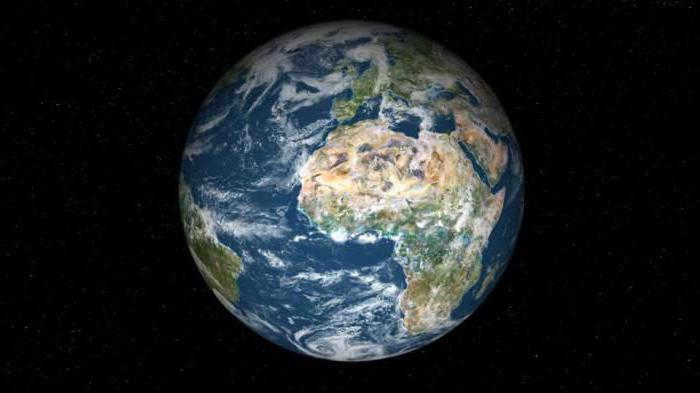
What is the shape of Earth’s orbit?
As we all know, a planet not only rotates around its own axis, but also takes a long journey around the center of the solar system. This path along which it moves in outer space is known as an orbit. We have already established the shape of our planet Earth, which is a result of its rotation.
But what exactly is the shape of Earth’s orbit? When it orbits around the Sun, it follows an elliptical path, being at varying distances from the Sun at different times of the year. The Earth’s position in its orbit determines the seasons on our planet.
The point at which the Earth is farthest from the Sun is called aphelion, while the point at which it is closest is called perihelion. Both of these terms have Greek origins.
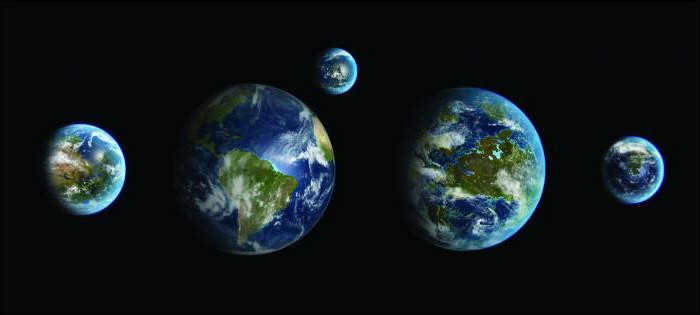
Ancient Civilizations’ Depictions
Let’s enhance our article with vibrant and imaginative illustrations envisioned by our predecessors of modern society. Their creativity was truly remarkable.
When asked about the shape of the Earth, ancient Babylonians believed it to be an enormous mountain, with their nation residing on one side. Above it, there rose a solid dome, resembling stone, which they considered to be the sky.
The Indians firmly believed that the Earth was upheld by four elephants, balanced on the backs of a turtle swimming in the milky sea. The elephants’ heads pointed towards the four cardinal directions.
In the 8th and 7th centuries BC, people began to gradually realize that the Earth is a separate entity and does not rest on anything. This realization was prompted by the awe-inspiring phenomenon of the Sun disappearing every night.
Conclusion
Essentially, the Earth is round. This understanding is sufficient for the average person, but not for certain scientific disciplines. Geodesy, astronautics, and astrophysics require precise data for their calculations. And this is where the answer to the question of the Earth’s shape becomes exact. It is a geoid, or an ellipsoid of rotation. The planet is flattened at the poles due to centrifugal forces. It is crucial to have accurate information about the Earth in order to obtain accurate calculations.
Gone are the days when the Earth was believed to be supported by elephants or depicted as a flat surface. Let us uncover the truth about the world around us and strive to appreciate its wonders!
The planet Earth is truly remarkable and beautiful. In the near future, the dream of many to witness our planet from space may become a reality with the advancement of space tourism. However, for now, we can only marvel at the stunning panoramas of Earth captured in photographs.
What does our planet actually look like from space? Does it gleam like the Moon when observed? These questions and more will be addressed in this article.
A Brief Overview of Earth
Earth, the fifth largest planet in our solar system, is composed of a variety of chemical elements, including oxygen, sulfur, hydrogen, iron, aluminum, silicon, calcium, hydrogen, magnesium, and nickel, which make up approximately 98% of its composition. The remaining 2% consists of other chemical elements. Throughout history, there has been ongoing debate regarding the appearance of Earth from an external perspective. However, it is now widely accepted that Earth has a flattened ellipsoid shape. With a surface area measuring 12,756 square kilometers and a circumference of approximately 40,000 kilometers, Earth is subject to a bulging effect near the equator due to its rotation. Consequently, the equatorial diameter exceeds the polar diameter by approximately 43 kilometers.
Earth completes a full rotation on its axis in a period of 23 hours, 56 minutes, and 4 seconds. Furthermore, it takes just over 365 days for Earth to complete a revolution around the sun.
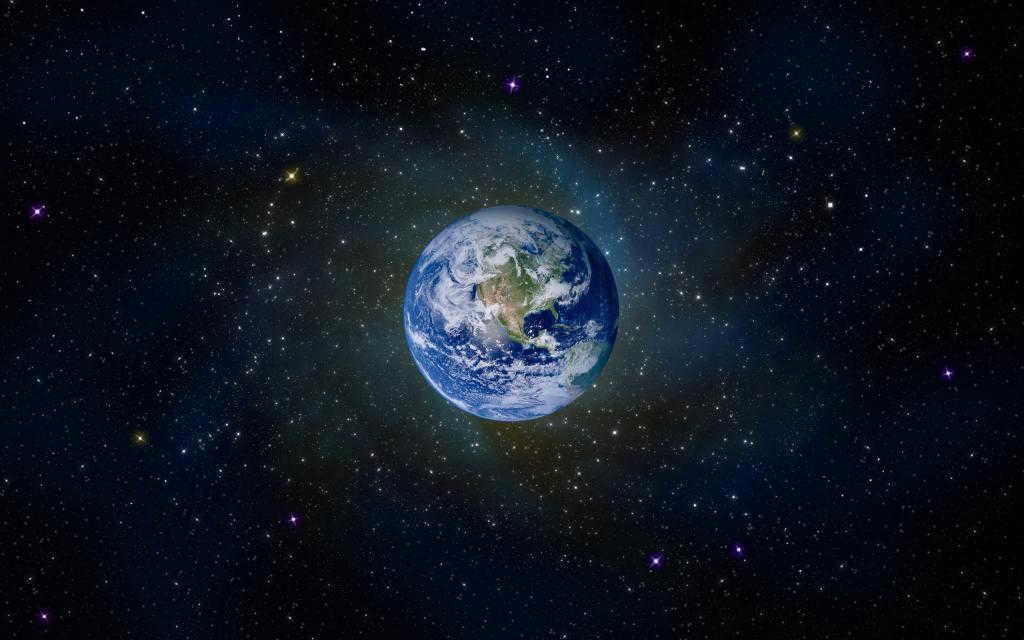
How does planet Earth appear when observed from outer space?
The sight of the planet from the vastness of space bears a resemblance to the appearance of the Moon. However, Earth possesses a unique radiance, emanating a breathtaking blue tint, reminiscent of the mesmerizing hues found in precious gemstones such as amethyst or sapphire. Furthermore, depending on its position in relation to the sun, the Earth showcases an array of vibrant colors including red, green, orange, and violet during the captivating moments of sunset or sunrise. Nevertheless, the dominant shade that envelops the Earth is a brilliant shade of blue, as the planet’s surface is predominantly covered in vast stretches of stunning blue hues.
The predominant hue is blue, as the expanse of water on Earth is five times greater than its land mass. Additionally, when viewed from space, one can observe continents adorned in shades of green or brown, as well as wisps of white and blue – clouds gliding above the Earth’s surface. During the nighttime, luminous dots can be seen dotting the landscapes of America, Europe, Russia, Japan, and Southern Africa. These regions are the most industrially advanced and developed, with the brightest points concentrated around major metropolitan areas.
Thanks to photographs taken from Earth’s orbit, modern humans have had the opportunity to witness our planet from an extraterrestrial perspective. Through the marvels of technology, people can now truly comprehend the appearance of our Earth from the vastness of space.
Information on an Orbital Object around the Earth
An Earth satellite refers to a celestial object that revolves around our planet due to the gravitational pull it exerts.
The Moon is the sole satellite of the Earth, situated approximately 384.4 kilometers away. It stands out as a significantly sizable satellite, occupying the fifth position among all the space bodies within the solar system.

Some fascinating facts about the Earth and its imagery
What does the Earth resemble from the perspective of space? It is truly stunning! One cannot help but envy the astronauts who have had the privilege of witnessing such magnificence firsthand. There are numerous captivating facts associated with this remarkable planet. Here are a few of them:
- According to astronomers, approximately 30,000 tons of interplanetary dust reach the Earth’s surface each year. How is it formed? As asteroids roam through the solar system, they collide with one another, producing dust and individual fragments that eventually approach the Earth. Most of the time, they disintegrate upon entering the atmosphere, resulting in the phenomenon known as shooting stars.
- During the winter months (February-January), the Earth’s rate of rotation slows down, and it appears to be slowing down even more each year. The exact cause for this phenomenon is still unknown, but some theories suggest that it may be related to the shifting of the Earth’s poles.
- It is fascinating to note that over 80% of the Earth’s surface is volcanic in origin.
- Have you ever wondered what the Earth looked like from space in the past? The first photograph of the Earth was captured from a rocket named “Fau-2” at a distance of 105 km in October 1946 in New Mexico, USA. Even back then, the Earth looked breathtakingly beautiful.
- In August 1961, German Titov became the world’s second space photographer and the second man to orbit the Earth. To this day, he remains the youngest cosmonaut to have ever entered space, accomplishing this feat at the age of just one month and 26 years.
- The initial colored photograph of the Earth was captured in August 1967 by the DODGE satellite.
What is the view of the Earth from outer space? The following collection showcases the magnificence and distinctiveness of our planet through the best space images available.
The initial photograph of two celestial bodies captured together
This photograph presents a mesmerizing and unparalleled sight. It showcases two radiant crescents, namely the Earth and the Moon, set against the backdrop of the vast and enigmatic Universe.
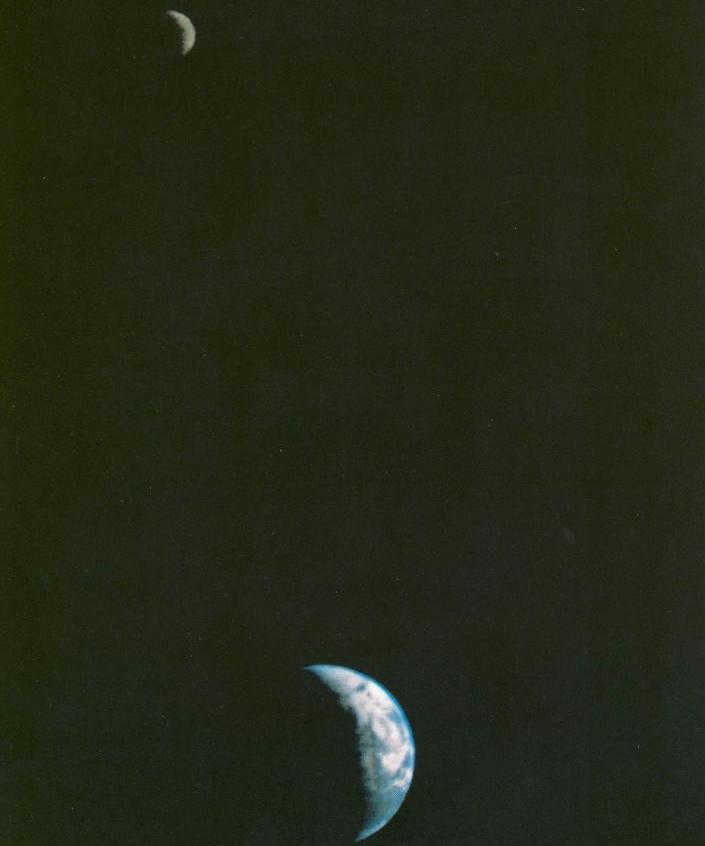
The Earth’s crescent, with a bluish hue, reveals the outlines of Eastern Asia, the Western Pacific Ocean, and regions of the Arctic, which appear white. This picture was captured during the autumn of 1977 by the Voyager 1 spacecraft. From a distance of over 11 million kilometers, the image showcases our planet Earth.
“Blue Marble.”
This photograph of the Earth, known as the “Blue Marble,” gained significant popularity and widespread circulation until 2002. It serves as a remarkable representation of our planet’s appearance from space. The creation of this image involved a complex and time-consuming process. Scientists meticulously selected and combined numerous frames captured over months of research, which documented various natural phenomena such as oceanic movements, drifting ice, and cloud formations. Through this meticulous effort, they were able to create a one-of-a-kind mosaic of colors that showcases the Earth’s beauty.

"Blue Marble" remains widely recognized and revered as a universal treasure. It stands as the most intricate and comprehensive depiction of Earth’s globe.
Perspective of Earth from the Moon
Among the world’s most iconic images is the stunning view of Earth captured by the crew of Apollo 11 (USA) during their historic 1969 moon landing mission.
Neil Armstrong and his fellow astronauts successfully landed on the Moon’s surface and safely returned home, just in time to capture this legendary photograph.
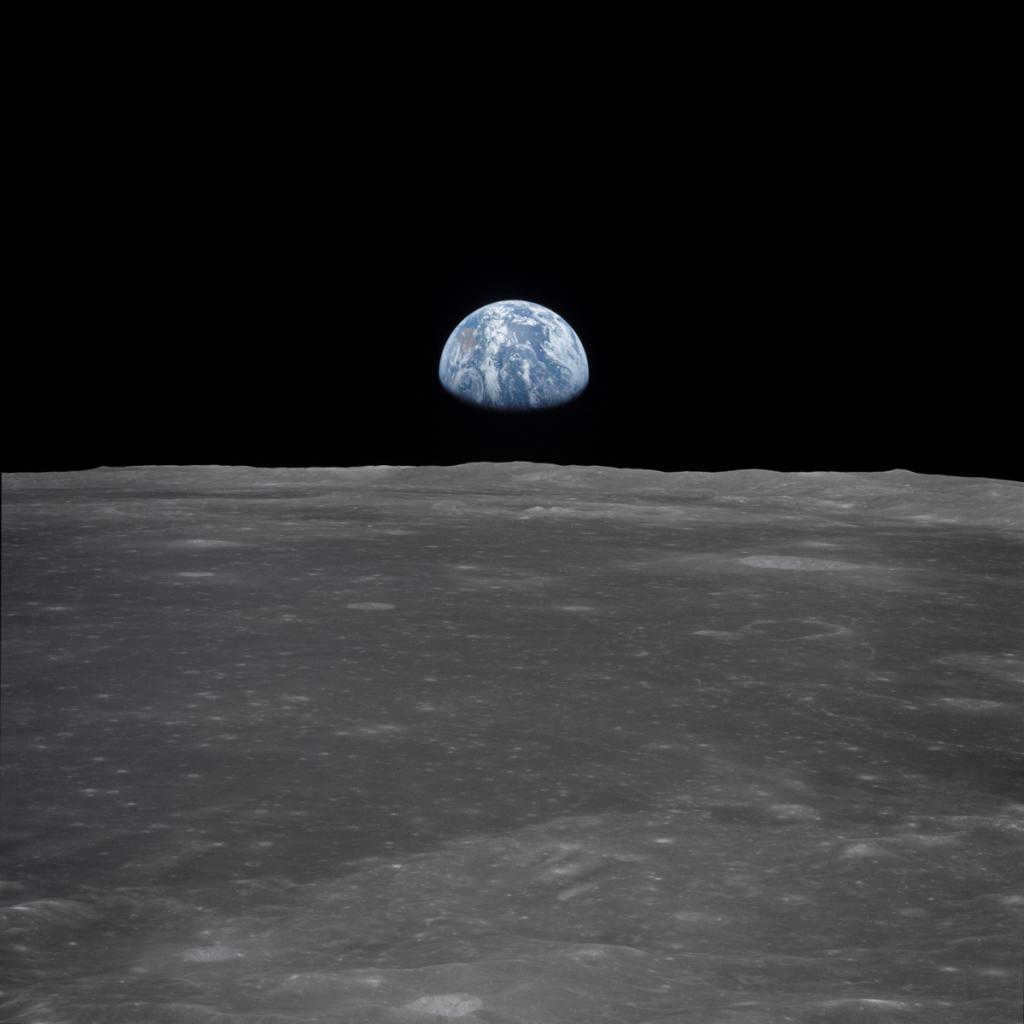
"Pale Blue Dot."
This iconic photograph was captured by the Voyager 1 space probe from an incredible distance of approximately 6 billion kilometers. During its journey through the depths of the solar system, the spacecraft transmitted back to NASA a collection of about 60 images, including the renowned “Pale Blue Dot”. Within this image, the Earth is depicted as a minuscule speck of bluish dust, measuring just 0.12 pixels, suspended within a vast expanse of brown.
This extraordinary photograph represents the very first portrait of our planet set against the backdrop of the immense cosmos. It serves as a stunning visual testament to the appearance of Earth when viewed from the farthest reaches of the universe.

The Earth’s Pale Blue Dot
The crew of Apollo 11 captured two iconic photographs, showcasing the Earth’s Pale Blue Dot against the backdrop of space. These images display the Terminator, which is a distinct line dividing the illuminated part of the planet from the unilluminated part. The Terminator completes two rotations per day, marking the moments of sunrise and sunset.
This extraordinary phenomenon is a rare occurrence, typically observed at the South and North Poles.
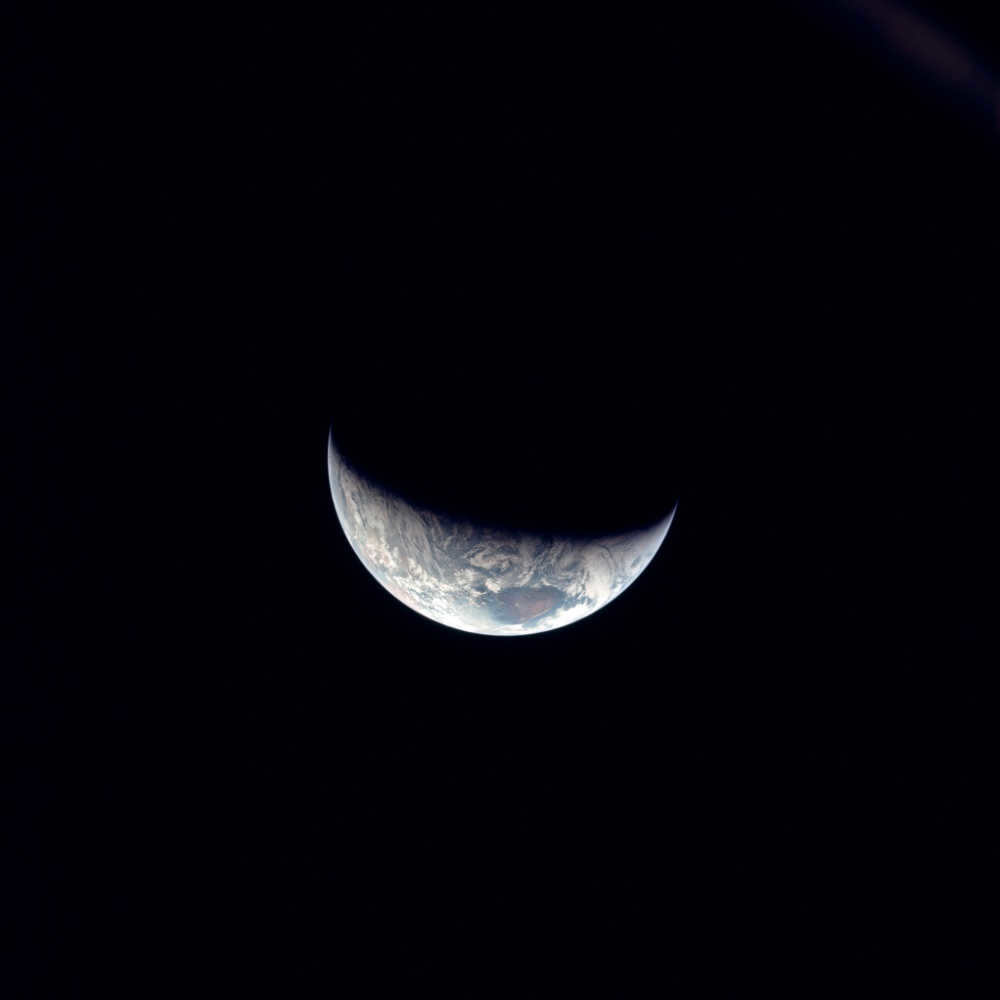
Earth as Seen from Mars and the Far Side of the Moon
Thanks to this photograph, which was taken from another planet, humanity was able to catch a glimpse of what the Earth looks like from a completely different perspective. When viewed from the Martian surface, our planet appears as a radiant disk floating above the horizon.
The image below, captured using Swedish Hasselblad equipment, provides a rare glimpse of the Moon’s far side. This historic photograph was taken in 1972 during the Apollo 16 mission, led by Commander John Young, when the crew descended to the dark side of our planet’s satellite.
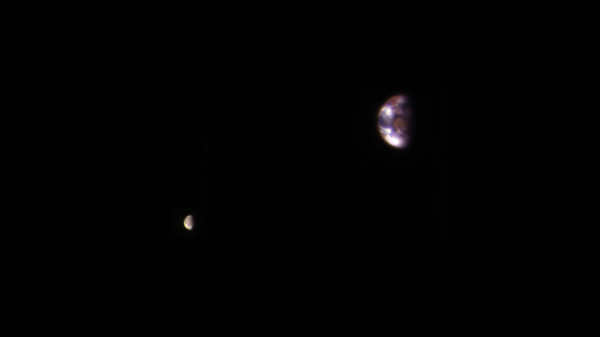
What does the Earth look like from space according to flat earth believers?
Despite the advancements in science and technology, there are still individuals who hold the belief that the Earth is flat. These individuals reject satellite images and distrust organizations such as NASA, labeling them as fraudulent and deceptive. One such individual, Michael Hughes, a 61-year-old American activist, took his beliefs a step further in November 2017. In his own garage, he constructed a rocket with a homemade steam engine, intending to ascend to several thousand meters in order to capture photographs that would support the notion of a flat Earth. Unfortunately, local authorities denied him permission to launch his rocket. Around the same time, an International Conference was held in the United States, where proponents of the flat Earth theory presented multiple arguments to support their claim.
Supporters of this movement hold the belief that the Earth lacks curvature, as the horizon line appears completely straight to the naked eye. According to their perspective, if our planet were indeed curved, bodies of water would exhibit a noticeable bulge in the center. Additionally, they are convinced that all photographs taken from space are fraudulent. The proponents of this movement make a number of outlandish assertions.
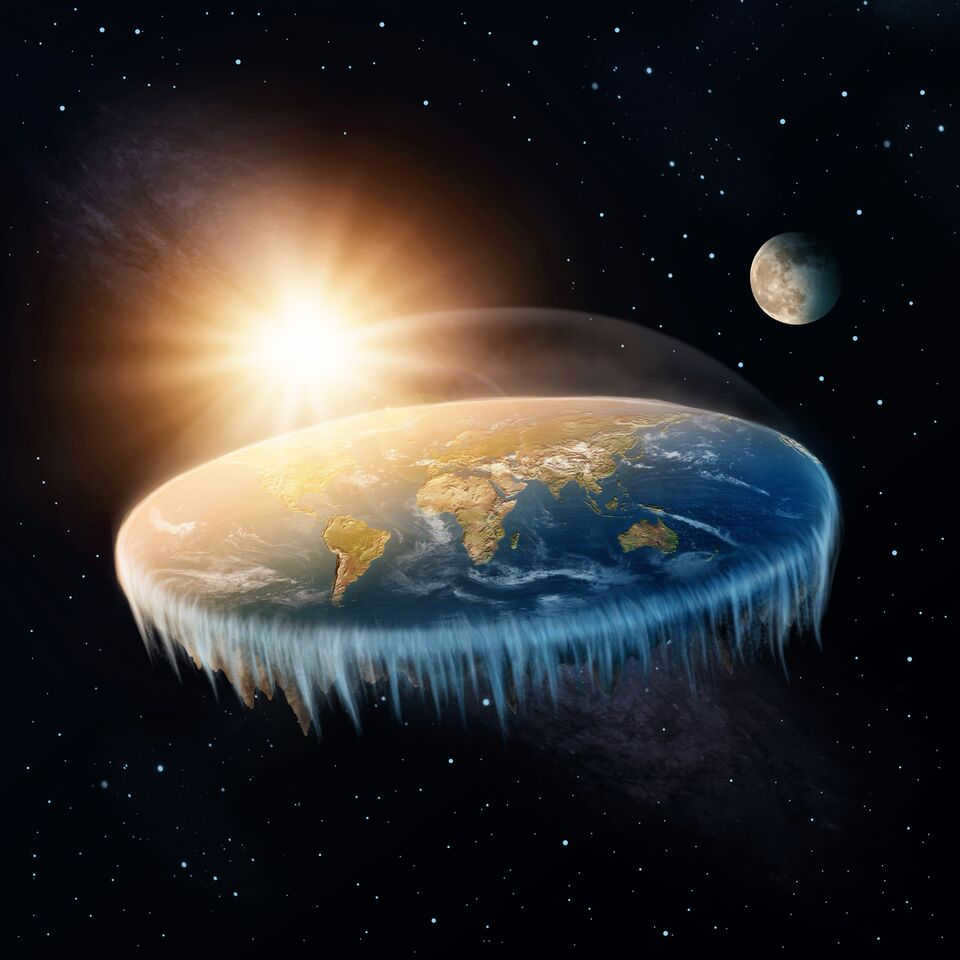
Winter Earth
What does the Earth look like during the winter season when viewed from space? NASA has provided a visual demonstration of how the New Year’s holidays appear. According to officials at the agency, the level of illumination in urban areas increases by approximately 30 percent during the holiday season. By utilizing imagery from the Some NPP satellite, scientists were able to compile a video that showcases this phenomenon on the internet.
The information obtained from this satellite was thoroughly examined by experts from both the National Atmospheric and Oceanic Administration as well as NASA.
Living Earth
It is truly fascinating to witness the breathtaking beauty of our planet, Earth. Thanks to the presence of an international space station, we now have the opportunity to observe our planet in real-time. What was once a mere fantasy has become a reality, as we can now access a live satellite image of Earth through this webpage.
The space station, stationed at an altitude of 400 kilometers, is equipped with three high-quality cameras developed by private companies, under the guidance of NASA. Astronauts at the Mission Control Center direct these cameras to capture stunning views of Earth from various angles. Now, anyone can witness the magnificence of our planet in real-time, observing its mountains, oceans, atmosphere, and cities. The station’s mobility allows us to witness nearly half of the globe within a single hour.
Don’t forget to bookmark this page to stay connected with the wonders of our living Earth!

In late September, REN-TV aired the popular show “The Most Shocking Hypotheses”, which caused quite a stir among the audience.
For a solid 45 minutes, a team of specialists, experts, and even a former NASA employee presented convincing arguments that the Earth is, in fact, flat.
When you ask a schoolchild about the shape of our planet, the most common response is that it is spherical. But have you ever wondered why that is?
Don’t be fooled by the misinformation spread by certain media outlets like REN-TV. Despite their efforts, more and more people are still aware that the Earth is indeed round.
Exploring the Earth’s Shape
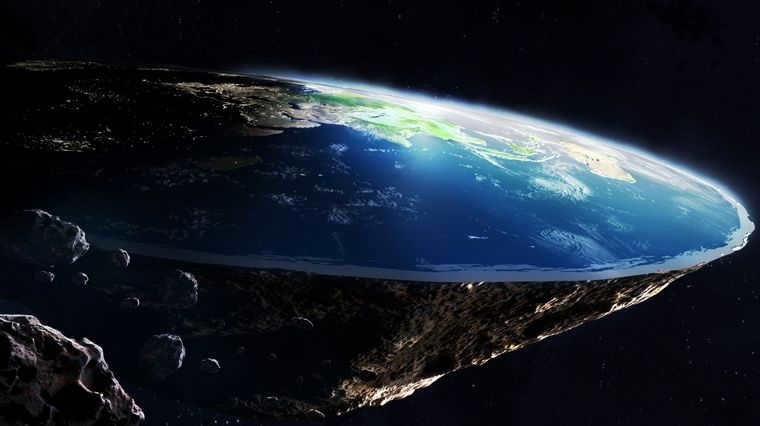
Every child will tell you that the Earth is round. Well, almost. Officially, our planet has the shape of a geoid, meaning it is slightly flattened at the poles and resembles a ball.
Supporters of the revolutionary theory reject this. They believe that we inhabit a flat disk with curved edges that curve upwards and are covered by a dome on top. The North Pole is located at the center of the disk, and there is no South Pole as such. Instead, there is an ice wall that acts as a protective barrier.
In the world of “Game of Thrones,” for instance, the Earth is also flat. There is a massive wall at the border, where the wildlings live and the White Walkers reign. Who knows, perhaps it’s not just a work of fiction, but a real but a real story.
Why is our knowledge so limited?

There is a prevailing belief that NASA consistently deceives the general public.
In the documentary series “The Most Shocking Hypotheses,” former NASA employee Matthew Boylan asserts that the Earth is actually flat, and this truth is symbolically represented on the United Nations flag.
Boylan alleges that he spent several years illustrating an inaccurately round blue planet and presenting it as reality, suggesting that NASA’s primary function is to perpetuate the spherical Earth theory.
The only way to verify these claims would be to secure employment within the agency.

The concept of the curvature parameter was initially devised by scientists. In reality, the acknowledgement of the Earth’s spherical shape is not disregarded by architects, military personnel, or designers. However, when it comes to practical calculations, they often assume a stationary and flat Earth. Surprisingly, this assumption proves to be effective as projectiles accurately hit their targets and buildings remain intact. So, if we truly inhabit a geoid-shaped planet, why does this assumption continue to hold true?
Let me provide you with a concrete example to illustrate this point. Take the city of Chicago, for instance. It can be observed from a distance of 140 kilometers, which contradicts the principles of science.
If the Earth were a perfect sphere, the city would appear to sink approximately 1.5 kilometers below the observer’s line of sight.
Take a look and see for yourself
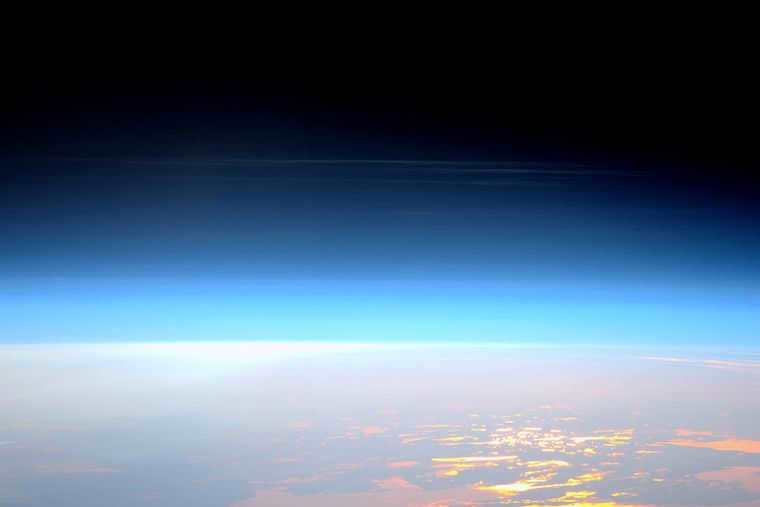
In May 2017, Darryl Marble, an American, was able to demonstrate the flat-earth theory in a straightforward and accessible manner while onboard an aircraft.
If the Earth is a sphere, then the plane should follow a curved path, requiring the pilot to periodically lower the aircraft’s nose to prevent it from ascending into space or the upper atmosphere.
During his flight, Darryl brought along a construction level. However, over the course of 23 minutes and 326 kilometers, the plane never had to lower its nose. Thus, it is traveling in a perfectly straight horizontal line, providing evidence for a flat Earth.
Give it a try. Use a construction level app on your phone during your next flight.
How about exploring the wonders of space?
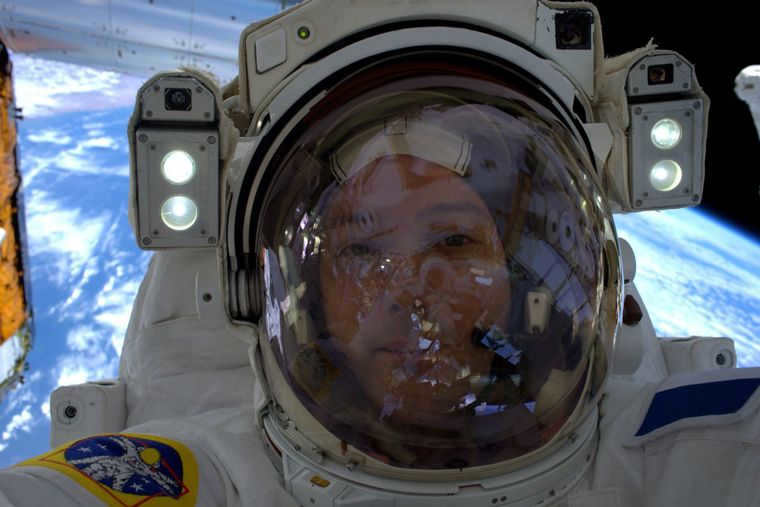
It’s all a sham! The footage has been manipulated, thanks to advancements in technology. In truth, humanity has never ventured beyond the confines of Earth’s dome.
The photos are captured using a Fisheye lens, causing any linear objects in the image to appear curved. The videos are meticulously edited using chromakey technology. Keen-eyed observers can spot the presence of air bubbles, studio lighting, and reflections on the astronauts’ suits.
Does everything we are aware of have a mythical nature?
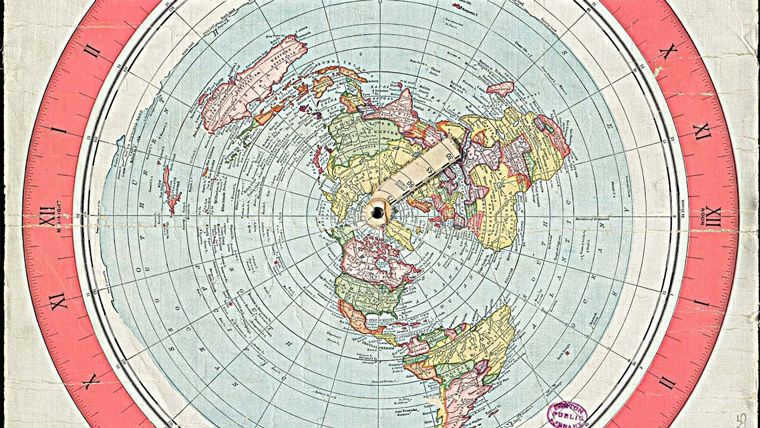
At some point, you will observe the ships vanishing on the horizon. However, this phenomenon is not caused by the warping of the Earth’s surface. Instead, it is due to the density of the atmosphere.
Furthermore, there are claims that gravity is non-existent. According to this perspective, our flat disk actually ascends at a rate of 9.8 meters per second squared, which keeps us grounded. Although, it remains unclear why birds are able to stay airborne.
Granted, you have yet to experience space firsthand. There is no absolute evidence that confirms the Earth’s spherical shape. As we commemorate the 60th anniversary of the launch of the first artificial satellite this year, it is worth questioning its authenticity. Could it be possible that the satellite was never truly sent into space? Is it plausible that we are being deceived?
Marked as a favorite

2018-08-03 8 4507
The History of the Society for the Exploration of a Flat Earth
Debates within the Society for the Exploration of a Flat Earth
Two Perspectives on Earth’s Shape
The Notions of “Up” and “Down” in the Flat Earth Hypothesis
From Heliocentrism to the Rejection of the Theory
A Unique Habitat We Inhabit
As more and more people connect through instant wireless communication and the Internet, an abundance of information becomes accessible and an increasing number of individuals engage in discussions on various topics. Recently, the shape of the Earth has become a subject of scrutiny within the online community, and after the Flat Earth Society’s annual conference, interest in this topic has only grown.
Every year, the number of individuals who believe in the flat Earth theory continues to grow.
A Brief Overview of the Flat Earth Society’s Origins
In ancient times, our ancestors were unaware that we inhabit a small object in the vast expanse of the cosmos, leading them to perceive the world as a flat plane bounded by the horizon. However, Aristotle’s pioneering mathematical calculations provided evidence for the planet’s sphericity, solidifying this notion as the prevailing belief.
However, in the 19th century, skepticism emerged regarding the planet’s spherical nature. Samuel Rowbotham proposed a hypothesis that the Earth was, in fact, disk-shaped. Soon, he found like-minded individuals in both Britain and the United States, leading to the establishment of the Flat Earth Society, which continues to pique genuine interest in modern times.
The viewpoints of the Flat Earth Society
Here is the perspective of the Flat Earth Society regarding the shape of our world:
- Our planet is a circular disk with a diameter of 40,000 kilometers, centered around the familiar North Pole.
- The Sun, Moon, and stars, with a diameter of approximately 52 kilometers, orbit the disk at an altitude of about 4,000 kilometers.
- Gravity is not caused by the attraction of the planet’s metallic core, but rather by the constant upward motion of the Earth’s disk, resulting in an acceleration of 9.8 m/s².
- Antarctica is not considered a continent, but rather a 48-meter high ice wall that surrounds the flat Earth.
Two Perspectives on the Shape
Advocates of the flat Earth theory argue that life would be impossible on a constantly rotating spherical object. This is not only because gravity is denied by society, which means that everything would “fall” off from the lower hemisphere. It is also because the centrifugal force generated by the ball’s rotation would result in the destruction of everything on its surface.
Among flat-earthers, there are differing beliefs regarding the shape of Mars, with some asserting that it is spherical and others claiming it to be a hologram.
Official science provides an explanation through the theory of gravity, which states that an object with a larger mass exerts a stronger force of attraction on an object with a smaller mass. This force of gravity counteracts the centrifugal force caused by the rotation of the planet, ensuring that the atmosphere and everything else on the planet’s surface remains in place. As a result, the balance between these two forces allows the Sun to keep the Earth and other planets in their orbits, and the Earth to maintain a constant orbit around the Moon.
The concepts of “top” and “bottom” in the theory of a flat Earth
In the conventional scientific view, we distinguish between “top” and “bottom” based on the perception of gravity, which is directed towards the Earth’s core. However, how does the flat Earth society respond to this?
Flat-earthers have yet to come to a consensus on the actual appearance of our Earth.
According to this relatively new theory, the illusion of gravity is created by the Earth’s flat disk constantly and uniformly moving upwards within the boundless universe. This constant upward motion seems to press us against the planet’s surface with a consistent force. While the end result may be similar to the gravitational theory, the underlying principle is different.
The concept of a rainbow is one of the arguments put forth by flat Earth proponents.
To and fro the heliocentrism
Each day, we witness the Sun ascending above the horizon and vanishing beyond it. In the geocentric system, it was believed that day and night revolved around the Earth together with the stars; the heliocentric system elucidates the occurrence of day and night through the planet’s rotation on its own axis and the moon’s revolution around us.
An illustration of a level Earth. One of the alternatives
Supporters of the Flat Earth Society offer a slightly different interpretation of diurnal cycles. According to their hypothesis, the sun and moon are equally minuscule and orbit in a perpetual circular path around the equator. Thus, day turns into night because they do not radiate light in all directions, but only downwards, akin to searchlights.
A variation of the flat Earth researchers from Brazil
The concept of a flat Earth is based on the belief that the Earth is surrounded by a wall of ice, which is commonly referred to as the continent of Antarctica.
Physicists argue against this idea, stating that for such an illusion to occur, the refractive index of our atmosphere would need to be greater than that of water. In other words, the atmosphere surrounding a flat Earth would have to be denser than water.
We reside in an extraordinary location
Varying, occasionally conflicting perspectives on the identical query have perpetually existed and will always do so. In the end, it is only through debate that truth emerges. Regardless of which theory about the composition of our world resonates with you, it is effortless to concur on one aspect – the Earth is a remarkable and magnificent place. A sunset, whether it occurs due to the planet’s rotation or owing to a hemispherical atmosphere, is equally captivating, and the nocturnal sky is enchanting regardless of the distance between us and the stars.
Aristotle – The preeminent of ancient thinkers; the originator of formal reasoning. Disciple of Plato. Instructor of Alexander the Great.
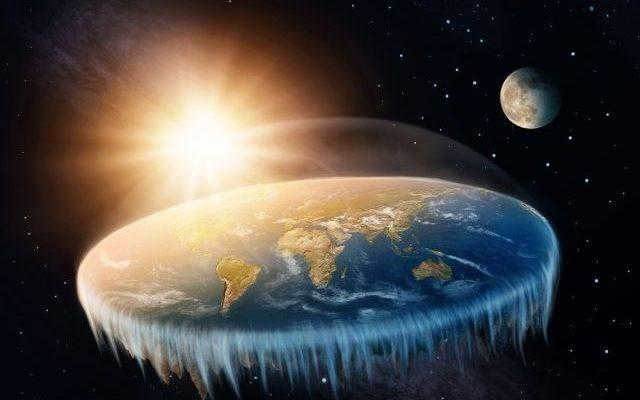
In the past, there was a heated controversy among scientists regarding the shape of our planet. It was even a matter of great significance for humanity. For every evidence supporting the “round” theory, there were numerous arguments against it. However, nowadays, this debate is no longer relevant. Photos taken from space provide undeniable proof that the Earth has a spherical shape, resembling a ball, an orange, or a tennis ball, although its contour is not perfectly even.
During ancient times, the understanding of science, if it could even be called science, was heavily influenced by myths, legends, and simple observations. The vast expanse of the starry sky above us gave rise to countless fantasies about the structure of the Universe, the celestial bodies that populate it, and their appearance and interactions.
Later on, religion played a role in shaping beliefs about the Earth’s appearance, its support, and its rotation. The Creator had their own set of laws for the universe, so the arguments put forth by scientists were often met with skepticism or outright refutation, and the proponents of certain hypotheses were even persecuted.
Today, the ideas that the Earth is held up by whales, elephants, or a giant turtle carrying a flat disk seem incredibly naive. However, for a long time, these notions were considered the only true explanations.
A rather unique theory regarding the Earth’s shape was present among the ancient Greeks. They believed that the Earth is a flat celestial body located beneath the celestial hemisphere and connected to the stars through invisible threads. Additionally, they viewed the moon and the sun as divine creations rather than objects of the universe.
Similarly, modern hypotheses concerning the flat shape of the planet have also been quite peculiar. The emergence of the Flat Earth Society, for instance, aimed to defend this particular version. The theory of a round Earth was vehemently rejected and portrayed by its opponents as a conspiracy and a collection of pseudoscientific fabrications.
Advocates of a flat Earth shape argued the following points:
- The Earth is a flattened disk with a diameter of 40,000 kilometers, with its center located near the North Pole.
- The planet is not orbited by the sun, moon, and stars, but rather they appear to be suspended above its surface.
- The existence of the South Pole is questionable, as Antarctica forms a wall of ice that encircles the planetary disc.
- The Sun, with a diameter of 51 kilometers, hovers above the Earth at a distance of approximately 5 thousand kilometers, casting its powerful light upon it like a spotlight.
However, the primary arguments against the validity of the “round” theory include the assertion that no humans have actually traveled into space, no one has ever landed on the Moon, all photographs of the Earth from space are falsified, scientific institutions are colluding with governments of fictitious space powers, and all inhabitants of the planet are unwitting participants in a grand secret experiment.
It is evident that these statements cannot be taken seriously as this “evidence” is completely unrelated to the field of science.
The most renowned theories regarding the Earth’s shape
Let’s delve into the history of ancient times. Skepticism regarding the notion of the Earth having a flat surface persisted among scientists. Their reasoning was that if the Earth were indeed flat, celestial bodies would be visible in the same zone, and the time of day would coincide across all corners of the globe.
Uncover the true meaning of life and the purpose of humanity on Earth by exploring the resources on our website.
In the 5th and 6th centuries B.C., Pythagoras documented the firsthand experiences of a sailor who traveled on the Mediterranean Sea. These accounts served as a diary of observations that the scientist carefully studied. Based on these records, Pythagoras proposed the idea that the Earth could be similar to a large sphere.
During the 4th century B.C., Aristotle presented arguments supporting the spherical shape of the Earth. He highlighted three classic pieces of evidence:
- During a lunar eclipse, the shadow cast by the Earth onto the Moon has a curved shape. This phenomenon can only occur if the object casting the shadow is a sphere.
- As ships sail away from the shore, they do not gradually disappear, but rather appear to sink into the water as they approach the horizon.
- People have a great fascination with the stars, as they allow us to marvel at them in one part of the Earth, while remaining hidden in another.
The ancient Greek scientist Eratosthenes was one of the first to prove that our planet is a sphere. He achieved this through an ingenious method using a specially designed pole that created a shadow when exposed to sunlight.
By observing the position of the celestial body simultaneously in different locations, the scientist was able to measure the height of the sun at its highest point and compare the measurements.
It was discovered that the positions of the sun relative to the Earth’s surface are at an angle to each other. This provided evidence for the planet’s spherical shape. Eratosthenes was even able to measure half of the globe’s diameter. Interestingly, modern calculations closely aligned with the measurements made by this ancient scientist. The Earth’s size in terms of radius today is approximately 6400 kilometers.
According to some researchers, the planet’s shape is not perfectly spherical, but rather uneven and occasionally flattened on the sides. It more closely resembles an ellipse, although this is not evident in space photographs.
It is important to bear in mind that Newton also contended that the circumference of the Earth’s sphere is not a shape that a modern schoolboy can sketch with a perfect circle. Recent discoveries and observations in space have revealed that the diameter of the Earth is indeed not consistent everywhere.
In the 1800s, Friedrich Bessel, a German mathematician and astronomer, successfully computed the radii at points of compression on the planet. These findings were utilized by researchers until the 1900s.
In our present time, Theodosius Krasovsky, a Soviet scientist, presented the academic community with more precise measurements. According to this data, the discrepancy between the equatorial and polar radii is 21 kilometers.
However, there is no doubt that our planet has the shape of a spherical circle. And the existence of numerous theories on this matter is proof that the Earth is a unique celestial body, the mysteries of which scientists are still trying to unravel.
Top 10 evidences supporting the round shape of the Earth
So, if young schoolboy Petya Vasechkin learned his lesson and presented ten of the most common (and now widely accepted by humanity) proofs of the Earth’s sphericity, here is what he would include:
- During a lunar eclipse, when the Moon enters the shadow cast by our planet, it appears as a circular shape, a segment of a circle, or an arc depending on the level of darkness. This is why the Moon turns into a crescent shape rather than a triangle or square shape during its darkening phase.
- Ships departing from the shoreline do not vanish as they go beyond the horizon line, but rather seem to descend behind it. This indicates that the curvature of the planet alters. Similarly, a worm crawling on the surface of an apple alters its path. The reason why ships do not plummet from top to bottom, as one might assume, is because the Earth is continuously rotating, aligning the paths for subsequent linear movement. And naturally, the shift of gravity towards the center is inherent in the spherical shape.
- Various hemispheres of the Earth offer different views of constellations. Imagine a flat table with a lampshade hanging above it. This lampshade can be seen from any point on the table, regardless of location. However, if a ball is placed under the lampshade, the lamp becomes invisible from the bottom. Consequently, constellations that are easily visible in the northern hemisphere cannot be observed in the southern hemisphere, and vice versa.
- When a flat surface is illuminated, the shadows it casts have equal lengths. On the other hand, shadows from a round object have different lengths and form an angle.
- A flat surface appears the same from any height. However, if you elevate yourself above a spherical object, you gain the ability to observe it from a greater distance. This change in perspective allows for an increased field of view.
- Photographs captured from an aircraft at varying altitudes serve as evidence of the Earth’s curvature. If the Earth were flat, it would appear flat regardless of the viewing height. Traveling around the world can be accomplished without any interruptions due to the absence of “edges” on the Earth’s surface.
- Aerial images taken from aircraft capable of reaching higher altitudes clearly depict a non-flat horizon, but rather a curved arc.
- Our expansive planet is home to numerous time zones. As one region experiences dawn, another witnesses the sun setting over the curved horizon. This phenomenon occurs as a result of the spherical rotation of the Earth on its axis. If the sun were to illuminate a flat surface, nights would cease to exist for people.
- All objects on the Earth’s surface are drawn towards the planet’s core. Spherical entities possess a center of mass situated in the middle.

